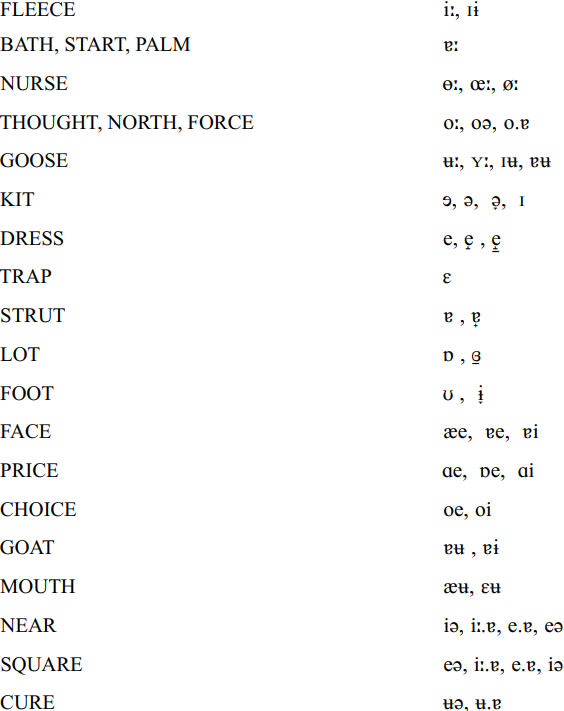x

هدف البحث
بحث في العناوين
بحث في المحتوى
بحث في اسماء الكتب
بحث في اسماء المؤلفين

اختر القسم
موافق


Grammar


Tenses


Present

Present Simple

Present Continuous

Present Perfect

Present Perfect Continuous


Past

Past Continuous

Past Perfect

Past Perfect Continuous

Past Simple


Future

Future Simple

Future Continuous

Future Perfect

Future Perfect Continuous

Passive and Active


Parts Of Speech


Nouns

Countable and uncountable nouns

Verbal nouns

Singular and Plural nouns

Proper nouns

Nouns gender

Nouns definition

Concrete nouns

Abstract nouns

Common nouns

Collective nouns

Definition Of Nouns


Verbs

Stative and dynamic verbs

Finite and nonfinite verbs

To be verbs

Transitive and intransitive verbs

Auxiliary verbs

Modal verbs

Regular and irregular verbs

Action verbs


Adverbs

Relative adverbs

Interrogative adverbs

Adverbs of time

Adverbs of place

Adverbs of reason

Adverbs of quantity

Adverbs of manner

Adverbs of frequency

Adverbs of affirmation


Adjectives

Quantitative adjective

Proper adjective

Possessive adjective

Numeral adjective

Interrogative adjective

Distributive adjective

Descriptive adjective

Demonstrative adjective


Pronouns

Subject pronoun

Relative pronoun

Reflexive pronoun

Reciprocal pronoun

Possessive pronoun

Personal pronoun

Interrogative pronoun

Indefinite pronoun

Emphatic pronoun

Distributive pronoun

Demonstrative pronoun


Pre Position


Preposition by function

Time preposition

Reason preposition

Possession preposition

Place preposition

Phrases preposition

Origin preposition

Measure preposition

Direction preposition

Contrast preposition

Agent preposition


Preposition by construction

Simple preposition

Phrase preposition

Double preposition

Compound preposition


Conjunctions

Subordinating conjunction

Correlative conjunction

Coordinating conjunction

Conjunctive adverbs


Interjections

Express calling interjection


Grammar Rules

Preference

Requests and offers

wishes

Be used to

Some and any

Could have done

Describing people

Giving advices

Possession

Comparative and superlative

Giving Reason

Making Suggestions

Apologizing

Forming questions

Since and for

Directions

Obligation

Adverbials

invitation

Articles

Imaginary condition

Zero conditional

First conditional

Second conditional

Third conditional

Reported speech


Linguistics

Phonetics

Phonology


Semantics


Pragmatics

Linguistics fields

Syntax

Morphology

Semantics

pragmatics

History

Writing

Grammar


literature


Reading Comprehension

Elementary

Intermediate

Advanced
Phonological systems Stressed vowel system
المؤلف:
Laurie Bauer and Paul Warren
المصدر:
A Handbook Of Varieties Of English Phonology
الجزء والصفحة:
582-33
2024-04-17
85
New Zealand English has, with very minor exceptions, a standard non-rhotic stressed vowel system. The lexical sets are assigned to phonemes as below, with the first symbol in the set of illustrative qualities being the one we select for a phonemic transcription.

Some of these will be discussed in more detail below, in particular the NEAR – SQUARE merger is a process of great interest in the phonology of current New Zealand English.
Lip-rounding and spreading is never strong in New Zealand English. There is some as-yet unexplained articulatory compensation for lip-rounding which can give the auditory impression of lip-rounding without any difference in the actual lip-position. Talk of lip-rounding in the descriptions below must be understood in terms of this mechanism rather than in terms of the expected pouting gesture. A video of one female speaker pronouncing a number of New Zealand English vowels is provided on the accompanying CD-ROM and in the online version. Her lip movement seems to us to be greater than is found with many speakers – perhaps because of the formal environment of the recording and the fact that she was reading isolated words. An interesting comparison can be made to illustrate this, using the recordings for herd and word. The former is taken from the word-list and the latter from an impromptu remark by the speaker, albeit produced with accompanying laughter, which contributed to the different lip shape. The comparison is interesting not just as an illustration of the different lip shape in formal and informal contexts, but also because auditory and acoustic comparison of the two // vowels shows that they are remarkably similar, despite the different lip configuration. As observed above, there would appear to be some other compensatory articulatory configuration that results in the rounded quality in the absence of rounded lip shape.
The fundamental system given above is subject to considerable neutralization before /r/ and /l/. Much of the neutralization is variable, particularly that before /l/, so that no simple statement of the system in neutralized positions can be given. Furthermore, the context of neutralization does not seem to be consistent for all vowels. In some cases there is neutralization before any /l/, in others the position of neutralization appears to be restricted to where /l/ is in a syllable coda (i.e. after the vowel but in the same syllable), in others to environments where the /l/ is not only in a coda but followed by an obstruent (perhaps particularly voiceless obstruents).
The phonemes instantiated in the following lexical sets are generally neutralized before /r/:

Note that this pattern is complicated by the NEAR-SQUARE merger where that occurs.
The phonemes instantiated in the following lexical sets are frequently neutralized before /l/